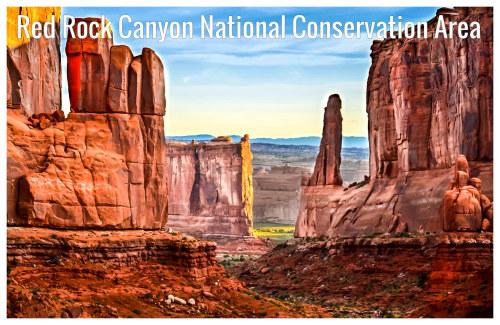
Beautiful rock formations in the Red Rock Canyon National Conservation Area, Nevada
February
Weather in February
As soon as February arrives, noticeable changes in climatic conditions are evident. Temperatures moderately rise, reaching a comfortable range from 32.9°F (0.5°C) to 56.8°F (13.8°C), providing some respite after the frigid January cold. With progressively lesser snowfall, this month often experiences an increased number of clearer, sunlit days. February carries the thawing whispers of an impending spring, marking a significant transformation in weather patterns. By the end of February, the cold grip of winter is giving way to the more temperate conditions of March.
On the first day of the month, sunrise is at 6:42 am and sunset at 5:07 pm. On the last day of February, sunrise is at 6:11 am and sunset at 5:36 pm PST.
Temperature
The arrival of February denotes a barely perceptible change in the average high-temperatures to a moderate 56.8°F (13.8°C) from January's 53.1°F (11.7°C). February nights are characterized by a significant departure from the daytime highs, dropping to an average temperature of 32.9°F (0.5°C).Rainfall
February is the month with the most rainfall, with 2.2" (56mm) of accumulated precipitation.Snowfall
Months with snowfall are January through April, November and December. During February, Red Rock Canyon National Conservation Area regularly aggregates up to 0.71" (18mm) of snow. In Red Rock Canyon National Conservation Area, during the entire year, snow aggregates up to 2.72" (69mm).Daylight
In Red Rock Canyon National Conservation Area, Nevada, the average length of the day in February is 10h and 54min.On the first day of the month, sunrise is at 6:42 am and sunset at 5:07 pm. On the last day of February, sunrise is at 6:11 am and sunset at 5:36 pm PST.
Updated: Jul 18, 2024
Published by: Weather U.S. | About Us
Data Sources | Weather Forecasting & Climate
Published by: Weather U.S. | About Us
Data Sources | Weather Forecasting & Climate
Frequently asked questions
What is the temperature in February in Red Rock Canyon National Conservation Area?
February temperatures vary between a high-temperature of 56.8°F (13.8°C) and a low-temperature of 32.9°F (0.5°C).
What is the rainiest month in Red Rock Canyon National Conservation Area?
February is the month with the most rainfall, with 2.2" (56mm) of accumulated precipitation.
How much does it rain in Red Rock Canyon National Conservation Area in February?
Throughout February, 2.2" (56mm) of precipitation is accumulated.
How much does it snow in February?
Throughout February, 0.71" (18mm) of snow is accumulated.
How many hours of daylight does Red Rock Canyon National Conservation Area have in February?
In February, the average day length is 10h and 54min.
When are sunrise and sunset in February?
In February, on the first day of the month, sunrise is at 6:42 am and sunset at 5:07 pm. On the last day of the month, sunrise is at 6:11 am and sunset at 5:36 pm PST.

Average temperature in February
Red Rock Canyon National Conservation Area, NV
- Average high temperature in February: 56.8°F
The warmest month (with the highest average high temperature) is July (96.7°F).
The month with the lowest average high temperature is January (53°F).
- Average low temperature in February: 32.9°F
The month with the highest average low temperature is July (70.7°F).
The coldest month (with the lowest average low temperature) is December (29.5°F).

Average rainfall in February
Red Rock Canyon National Conservation Area, NV
- Average rainfall in February: 2.2"
The wettest month (with the highest rainfall) is February (2.2").
The driest month (with the least rainfall) is June (0.1").

Average snowfall in February
Red Rock Canyon National Conservation Area, NV
- Average snowfall in February: 0.7"
The month with the highest snowfall is January (0.8").
The months with the least snowfall are May, June, July, August, September and October (0").

Average daylight in February
Red Rock Canyon National Conservation Area, NV
- Average daylight in February: 10h and 5min
The month with the longest days is June (Average daylight: 14h and 36min).
The month with the shortest days is December (Average daylight: 9h and 42min).